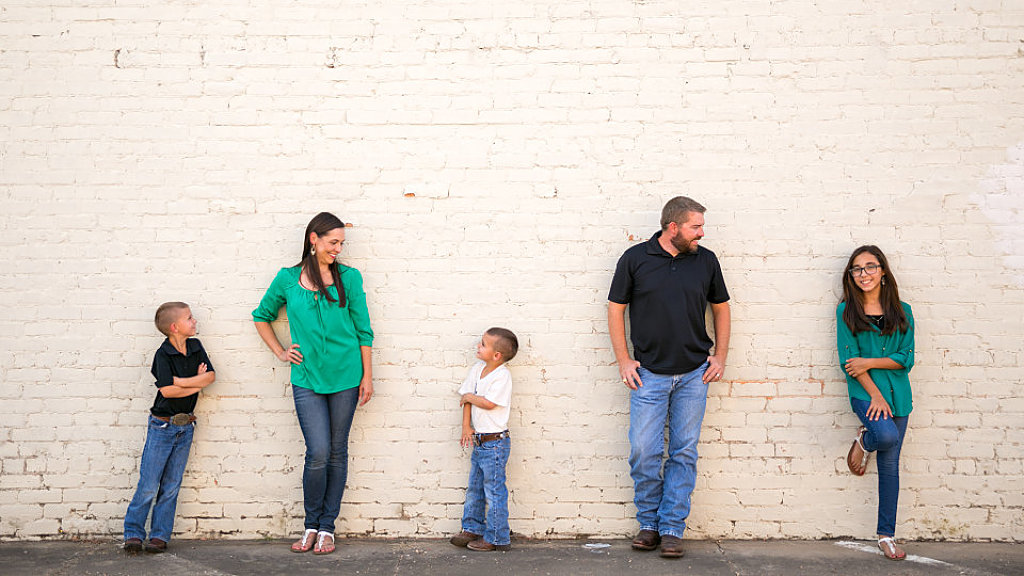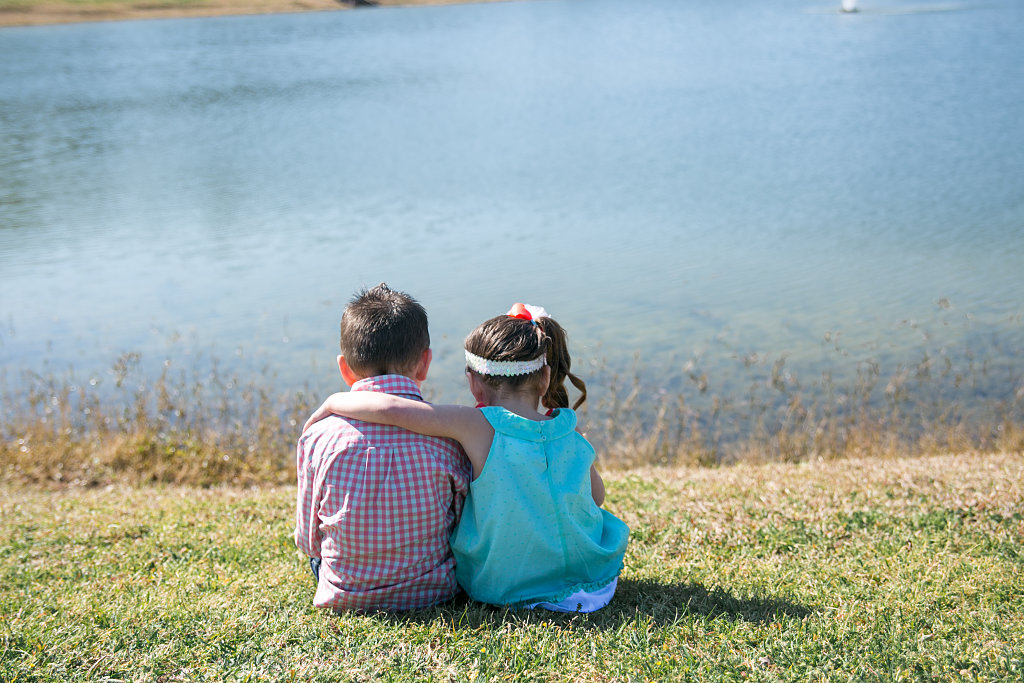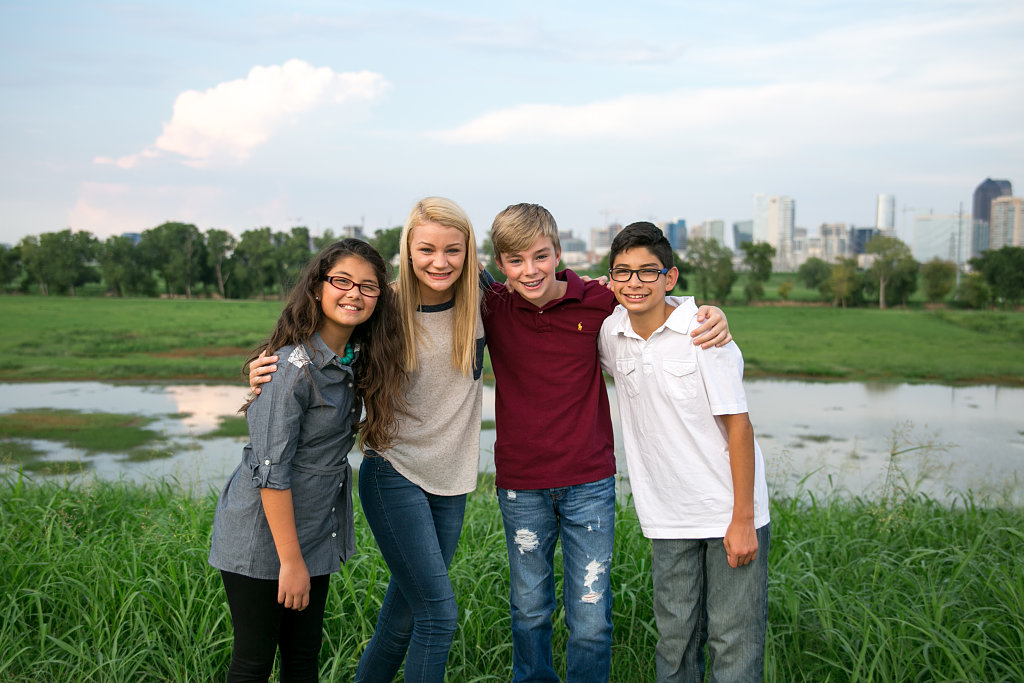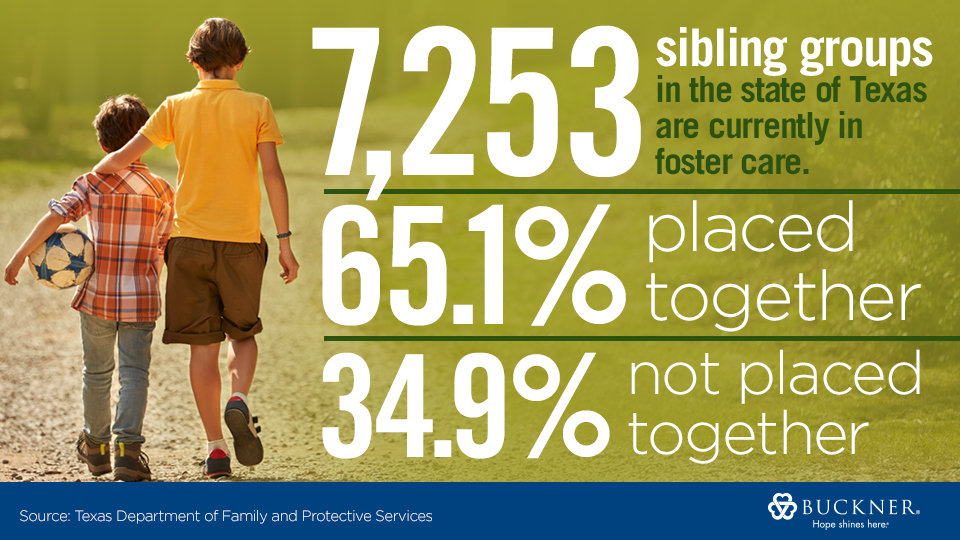Sibling separation in foster care: An impetus for change
Today is National Sibling Day, a day to remember and honor your siblings. But many foster children throughout the country are separated from their siblings while they are in care due to space and other concerns. The emotional pain experienced due to sibling separation can be overwhelming and devastating.
Samela Macon, senior director of domestic foster care and adoption at Buckner Children and Family Services, discusses some of the issues relating to sibling separation and how we can change to better help children in foster care.
There are over 400,000 children in foster care across the United States. Over 70% of those children are members of a sibling group, and many are placed separately for a variety of reasons. The emotional pain experienced by those separated is often overwhelming and devastating. Because of the significant relationships that children may have with their parents and siblings, these children may experience anxiety, trauma, grief, guilt and loss of identity.
Amid this experience, siblings often stand as the last remaining connection and anchor of stability. The child welfare community has a life-changing responsibility to understand the needs of siblings in foster care and champion the cause of those experiencing the injustice of sibling separation.

The impact of sibling separation
“I had been the mother figure for my siblings for 4 years," a foster care alumnus told me. "It was like taking my kids from me. The baby was only 8 months old when my mother passed away, and I took on raising them at the age of 7. The other two were 2 and 3 years old. It was hard on me when we were split up. They thought I needed a chance to be a child, but that part of me was already gone.”
The death of a parent or parental abuse and neglect creates a different and often deeper bond between siblings. Together, they have experienced some of life’s greatest hardships and struggled to survive. Under such adverse circumstances, the older siblings often become protectors and providers in the daily care of younger siblings.
The idea of suddenly being torn away from each other with no knowledge of the other’s whereabouts or well-being can be devastating. A common sentiment among those who have experienced sibling separation is the feeling of being punished for something that was no fault of their own.
“I aged out of foster care. I spent my teenage years away from my brothers and, as an adult, I still don’t really know who my brothers are. We kind of have a relationship, but not the relationship we would have had if we’d lived in the same household together.
Children are taken from their home by no fault of their own. It’s a shame that so many children are being punished because there’s a home issue and they’re the ones being removed for their safety-to add that they’ve been taken away from their brothers and sisters is just a second punishment … being separated from siblings is a destruction of the family that is almost impossible to recover from,” Robin King, former foster child.
The multiple losses a child experiences when entering foster care is compounded by the unexpected loss of sibling separation. As one foster care alumni shared, “Being separated from my entire life was bad enough but being separated from my siblings is still painful.”
Relationships between siblings frequently meet or support developmental needs such as belonging, security, self-esteem, rites of passage, and mentoring. Sibling co-placement also appears to promote youth's successful integration into foster family systems and youth who are placed together in foster care tend to have better academic outcomes, lower rates of emotional and behavioral problems, as well as a greater sense of be-longingness than separated siblings.
Former foster youth reported that siblings provided them with a ready-made support group, an ally, someone to talk to if they had problems, and someone they could depend on.
Efforts to create change

To the credit of child advocates nationwide, the legislative success of the Adoption and Safe Families Act of 1997 has improved the length of stay in care for youth by establishing expectations to keep siblings together and move children toward permanency in a more timely manner.
More recent legislation such as the Fostering Connections to Success and Increasing Adoptions Act of 2008 and the Families First Prevention Services Act supports strengthening family connections and improved outcomes for children impacted by abuse and neglect as well. However, FFPSA is still too new to assess and has yet to be fully implemented in all states.
There is limited research available to assess the impact on improved outcomes regarding the Fostering Connections Act. According to the Child Welfare Information Gateway, a service of the U.S. Children’s Bureau, no sibling studies have been conducted to assess improvements since 2008.
Several states have recognized the importance of sibling protections evidenced by establishing sibling placement policies and procedures and some states have successfully developed a Sibling Bill of Rights.
Despite such modest legislative progress, the continued lack of resource homes available for siblings entering care remains a paramount concern in child welfare. This issue presents an even greater concern for sibling groups of 3 or more who typically require homes with greater capacity.

A 2017 study published in The Chronicle of Social Change found that half of the states in the U.S. are in a foster housing crisis.
The article, The Foster Care Housing Crisis, reports that at least half of the states in the country have lost foster care capacity over the last 5 years, while another 15 states were unable to provide enough information for researchers to make a determination regarding their capacity.
According to the article, the federal government has no existing mandate to track and or monitor the foster care capacity of states. Given that foster home capacity is already limited, it is reasonable to expect that the crisis will continue given this trend along with increased removals due to the ongoing opioid epidemic.
Research shows that joint sibling placements can increase the likelihood of achieving permanency and is associated with a significantly higher rate of family reunification. When siblings are co-placed, child welfare professionals can streamline visits, communication, and support more effectively. There is also improved communication between the biological parents and the foster parents, especially when there are professionals involved who are committed to the process of reunification.
A foster care alumnus recently shared with me: "Sibling relationships are like no other. While I was able to fill the void my parents left me with through my adoptive parents, there’s not much that helps the pain of losing my siblings. They’re the only friends I ever had who truly knew me, and I will never be able to replace them."




Comments